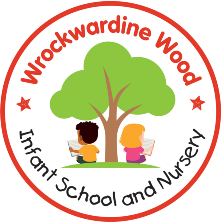History
Subject Lead by: Mrs Gascoigne
The Nature of History
A high-quality history education helps pupils develop a coherent understanding of Britain’s past and that of the wider world. It should inspire children’s curiosity and equip them with the ability to:
-
Ask perceptive questions
-
Think critically
-
Weigh evidence
-
Sift arguments
-
Develop perspective and judgement
History supports children in understanding the complexity of people’s lives, the process of change, the diversity of societies, and the relationships between different groups. It also helps pupils reflect on their own identity and the challenges of their time.
Curriculum Intent
We believe that history teaching should immerse children in real events, significant individuals, and key developments from the past. Our aim is to help pupils develop a well-rounded understanding of their local environment, British history, and global history.
Our curriculum is designed to:
-
Ignite children’s curiosity and enthusiasm for the past and how it has shaped their lives
-
Develop a sense of identity and cultural understanding through exploration of historical heritage
-
Build a secure understanding of chronology and a clear ‘sense of time’
-
Encourage children to communicate historical knowledge in a range of forms – oral, written, digital, and visual
-
Promote enquiry into both significant events and significant people who have shaped history
-
Explore broader concepts such as civilisation, empire, legacy (impact and influence), and invasion
-
Equip children with a broad set of skills, including:
-
Enquiry and research
-
Interpretation of evidence
-
Debate and discussion
-
Problem-solving and critical thinking
-
We aim for children to develop a secure understanding of key historical concepts and content—known as substantive knowledge:
-
Significant people
-
Significant events
-
Civilisation
-
Empire
-
Legacy – impact and influence
-
Invasion
Alongside this, children will also gain a secure understanding of how historians investigate and interpret the past, known as disciplinary knowledge, by applying second-order concepts:
-
Chronology
-
Continuity and change
-
Cause and effect
-
Similarity and difference
-
Historical interpretation
Curriculum Implementation
To deliver our intent, we ensure that:
-
The history curriculum is carefully sequenced with clear progression and defined end points
-
Knowledge is built over time, with learning broken into clear component parts to help children know more and remember more
-
Lessons are planned with deliberate pedagogical choices to develop:
-
Substantive knowledge – what children need to know about the past
-
Disciplinary knowledge – how to work and think like a historian
-
-
Teachers design classroom activities that:
-
Are clear about learning objectives
-
Provide opportunities for practice, application, and reflection
-
Match the developmental level and expertise of each child
-
-
Children are taught to apply the key and second-order concepts across a range of historical contexts
-
Learning is supported by a rich vocabulary, embedded in curriculum planning, helping children articulate complex historical ideas
-
Educational visits and sessions with historians are planned with pre-teaching, so children engage meaningfully with the experience
-
SEND learners receive subject-specific adaptations to meet individual needs without reducing expectations
-
Time is built into the curriculum for children to work collaboratively, develop ideas, and apply their learning socially and contextually
Please click the links below to access key History documents:



